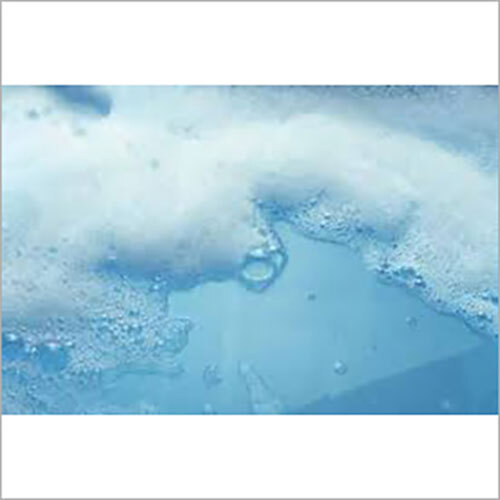The Importance of Defoamers in Industrial Processes and Applications
Selecting the Right Defoamer for Your Specific Application Requirements
Choosing the proper defoamer for certain application demands is a nuanced process that demands cautious factor to consider of numerous factors, such as the foam type, operating, and tool conditions. Comprehending the subtleties of defoamer performance-- including rate and perseverance-- while likewise accounting for regulative and ecological aspects is critical.
Recognizing Foam Development
Foam formation happens when gas is entraped within a liquid, producing a steady structure of bubbles. This phenomenon can substantially influence numerous commercial procedures, particularly in markets such as food manufacturing, drugs, and wastewater therapy. The existence of foam can impede mixing, lower item top quality, and even result in functional inefficiencies.
Foam normally forms because of a mix of elements, consisting of surface-active representatives, frustration, and the features of the fluid phase. Surfactants lower the surface area stress of the fluid, facilitating the formation of bubbles that can stabilize and coalesce. Frustration, whether from mechanical mixing or gas introduction, enhances bubble formation, leading to raised foam volume.
Comprehending the auto mechanics of foam development is vital for markets aiming to optimize their procedures. By identifying the particular conditions that advertise foam generation, companies can apply techniques to reduce its impacts. This knowledge lays the foundation for choosing appropriate defoaming representatives that successfully target the special difficulties posed by foam in different applications. Consequently, a comprehensive understanding of foam development is crucial for improving effectiveness and keeping item honesty across numerous markets.
Kinds of Defoamers Available
Different kinds of defoamers are readily available to deal with the difficulties postured by foam in commercial applications. defoamers. Generally identified, defoamers come under 3 categories: silicone-based, non-silicone-based, and natural defoamers
Silicone-based defoamers are renowned for their performance and stability throughout a large range of temperature levels and pH degrees. They are typically utilized in applications where solid foam reductions is necessary, such as in finishings, paints, and adhesives. Their reduced surface tension allows for rapid foam collapse.
Non-silicone-based defoamers, often made from organic compounds, provide an option for applications conscious silicone deposits. These defoamers can be additional split right into polyether and ester kinds, each tailored to meet specific formulation requirements. Non-silicone defoamers are frequently made use of in food processing and individual care products as a result of their compatibility with numerous solutions.
All-natural defoamers, stemmed from plant or pet sources, are acquiring traction due to their environment-friendly account. These items are specifically appealing in applications where governing compliance and sustainability are paramount, such as in agrochemicals and biotechnology.
Choosing the right kind of defoamer is important for maximizing efficiency and guaranteeing compatibility with particular applications.
Secret Application Considerations
When selecting a defoamer, it is important to consider the particular application demands to make sure ideal performance. defoamers. Different industries have distinctive requirements, such as food handling, drugs, or wastewater treatment, and each application might need one-of-a-kind defoaming residential properties
Key factors to examine consist of the tool in which the defoamer will be made use of, whether it is water-based, oil-based, or a combination thereof. The temperature level and pH levels of the application can additionally considerably influence the effectiveness of a defoamer. Furthermore, compatibility with other chemicals present in the system is crucial to stop adverse responses that can compromise efficiency.
Another important factor to consider is the lathering actions of the particular system. Understanding whether the foam forms promptly or slowly can assist the option of a defoamer that targets the origin reason properly. Furthermore, the preferred speed of defoaming can affect the choice, as some applications need rapid action while others might endure slower defoaming processes.
Finally, environmental and regulatory factors to consider should not be overlooked, particularly in markets with rigorous conformity demands. Picking a defoamer that lines up read the article with these aspects guarantees both efficiency and safety and security in the application.

Efficiency Screening Methods
Reviewing the performance of a defoamer needs a systematic technique to testing that precisely gauges its effectiveness in details applications. Various performance screening methods can be employed to determine the ideal defoamer for a provided formula.
One usual technique is the bubble test, which evaluates the defoamer's ability to lower foam quantity gradually. This test involves creating a steady foam and after that adding the defoamer to observe the rate of foam collapse. An additional technique is the dynamic foam examination, where foam is created under regulated problems to simulate real-world application situations. This method gives insights right into just how the defoamer carries out under differing shear conditions.

Eventually, picking the suitable performance testing method relies on the specific application and the type of foam being dealt with. Each method provides valuable data that can direct formula changes and boost the effectiveness of the defoamer in sensible applications.
Finest Practices for Choice


Next, take into consideration the defoamer's efficiency in regards to rate of activity and determination. A quick-acting defoamer might be essential for procedures where fast foam reductions next page is crucial, while an extra consistent you can try these out formula may be needed for prolonged foam control. Additionally, assess the environmental impact of the defoamer, including its biodegradability and any kind of governing conformity demands.
Conduct trials with selected defoamers to establish their performance in real-world problems. This step is important to verify that the selected item satisfies performance assumptions. Last but not least, consult with producers or providers for technological assistance and support, as they can provide valuable understandings right into product formulas and application strategies. By sticking to these best practices, you can enhance foam control performance and make sure the long life of your procedures.
Final Thought
In recap, selecting the suitable defoamer requires a thorough evaluation of various elements, consisting of foam kind, tool, operating problems, and environmental factors to consider. Recognizing the unique qualities of foam formation and the available defoamer options is critical.
Choosing the proper defoamer for certain application demands is a nuanced procedure that requires cautious factor to consider of multiple factors, such as the foam kind, operating, and tool problems.Choosing the best defoamer is essential for accomplishing ideal performance in foam control applications. A quick-acting defoamer may be essential for processes where fast foam suppression is crucial, while a more persistent formulation might be needed for long term foam control.In recap, choosing the proper defoamer requires a detailed assessment of various variables, consisting of foam type, tool, operating problems, and ecological factors to consider. Recognizing the special attributes of foam formation and the readily available defoamer alternatives is critical.